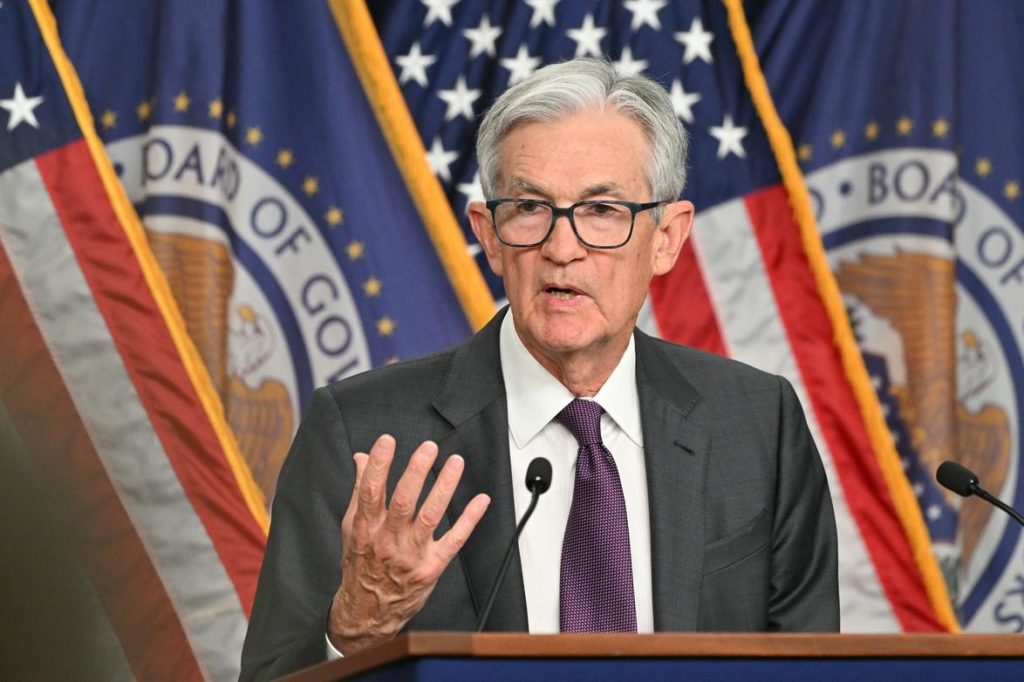U.S. Federal Reserve Chair Jerome Powell conducts a press conference following the Monetary Policy Committee
… More
AFP via Getty Images
On March 19, 2025, the Federal Reserve decided to keep the target for the Federal Funds rate steady, maintaining a range of 4.25% to 4.50%. The FOMC Statement highlighted…
Recent indicators show that economic activity continues to expand robustly. The unemployment rate has remained low in recent months, and the conditions in the labor market stay strong. Inflation is somewhat high.
The Committee aims for maximum employment and a 2 percent inflation rate over the long term. However, uncertainty concerning the economic outlook has increased. The Committee is mindful of risks impacting its dual mandate.
Jerome H. Powell and his colleagues have adjusted their real GDP growth forecast for 2025 down to 1.7% (from 2.1%) while raising their inflation prediction to 2.7% (from 2.5%). During the press conference that followed, Powell stated, “The economy is fundamentally strong and has made considerable headway toward our objectives in the last two years. Labor market conditions are solid, and inflation is approaching our target of 2 percent for the long term, though it still remains somewhat elevated.”
Stocks Can Thrive Regardless of Interest Rate Changes
Even with the Fed’s optimistic outlook, there will likely be extensive analysis of interest rate fluctuations in the near term. Nonetheless, historical data show that stocks typically yield strong returns irrespective of whether rates rise or fall. From 1954 to 2024, equities have demonstrated solid performance in both high and low interest rate environments:
- When the Fed Funds Rate exceeded 4.245%, Value stocks averaged a return of 15.5%, Dividend Payers saw 12.1%, and Non-Payers experienced 9.1% over the subsequent 12 months.
- Even at lower rates, stocks delivered double-digit returns, with Value stocks gaining 12.2% and Growth stocks 10.2%.
Volatility Is Normal—Not a Reason to Sell
On March 13, 2025, stocks entered a correction territory, defined as a decline of 10% or more based on the S&P 500. Such corrections occur about every 11 months on average, but they can certainly be unsettling, especially when “this time feels different.”
Each downturn is unique, and declines in the market are unavoidable. Historical patterns show that the key to success in stocks is to remain steadfast during these times. It is worth noting that previous declines have typically been followed by substantial recoveries. Since the inception of The Prudent Speculator in 1977, the S&P 500 has experienced 10% corrections 39 times with an average loss of 17.83%, yet each decline was followed by an impressive recovery, averaging a gain of 40.69%!
The Bottom Line
While there are ongoing economic concerns, history indicates that remaining invested—particularly in Value stocks and Dividend Payers—has paid off for patient investors. The Fed’s perspective may evolve in the coming months, and stock prices will continue to be volatile, but long-term investors should heed the wisdom of legendary investor Charlie Munger: “The first rule of compounding is to never interrupt it unnecessarily.”
For further insights, feel free to join my recent Webinar: 3 Market Myths Debunked and Q&A.
Disclosure: Please be aware that shares of the stocks mentioned are held by clients of Kovitz Investment Group Partners, LLC, an SEC-registered investment advisor. For a list of stock recommendations similar to those made in The Prudent Speculator, visit theprudentspeculator.com.



